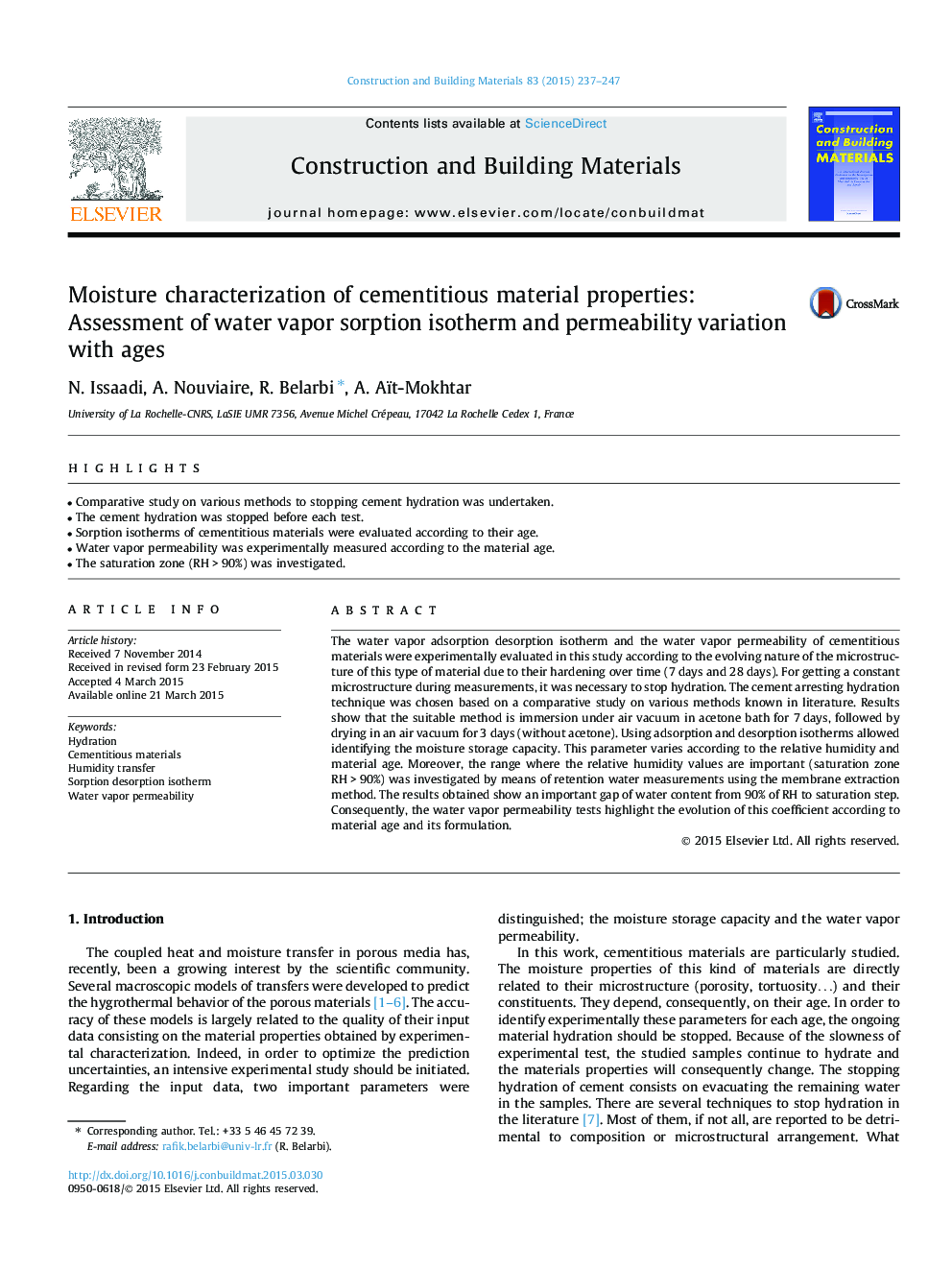| Article ID | Journal | Published Year | Pages | File Type |
|---|---|---|---|---|
| 6721015 | Construction and Building Materials | 2015 | 11 Pages |
Abstract
The water vapor adsorption desorption isotherm and the water vapor permeability of cementitious materials were experimentally evaluated in this study according to the evolving nature of the microstructure of this type of material due to their hardening over time (7Â days and 28Â days). For getting a constant microstructure during measurements, it was necessary to stop hydration. The cement arresting hydration technique was chosen based on a comparative study on various methods known in literature. Results show that the suitable method is immersion under air vacuum in acetone bath for 7Â days, followed by drying in an air vacuum for 3Â days (without acetone). Using adsorption and desorption isotherms allowed identifying the moisture storage capacity. This parameter varies according to the relative humidity and material age. Moreover, the range where the relative humidity values are important (saturation zone RHÂ >Â 90%) was investigated by means of retention water measurements using the membrane extraction method. The results obtained show an important gap of water content from 90% of RH to saturation step. Consequently, the water vapor permeability tests highlight the evolution of this coefficient according to material age and its formulation.
Related Topics
Physical Sciences and Engineering
Engineering
Civil and Structural Engineering
Authors
N. Issaadi, A. Nouviaire, R. Belarbi, A. Aït-Mokhtar,
